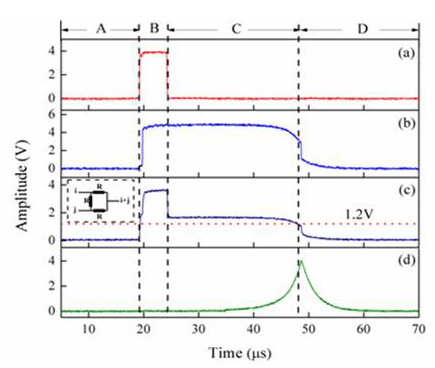Optics Express, Vol. 21, Issue 15, pp. 17961-17971 (2013).
Zhixin Li, Weiguang Ma, Xiaofang Fu, Wei Tan, Gang Zhao, Lei Dong, Lei Zhang, Wangbao Yin, and Suotang Jia.
State Key Laboratory of Quantum Optics and Quantum Optics Devices, Laser Spectroscopy Laboratory, Shanxi University, Taiyuan 030006, China.
Abstract
A new type of continuous-wave cavity ringdown spectrometer based on the control of cavity reflection for trace gas detection was designed and evaluated. The technique separated the acquisitions of the ringdown event and the trigger signal to optical switch by detecting the cavity reflection and transmission, respectively. A detailed description of the time sequence of the measurement process was presented. In order to avoid the wrong extraction of ringdown time encountered accidentally in fitting procedure, the laser frequency and cavity length were scanned synchronously. Based on the statistical analysis of measured ringdown times, the frequency normalized minimum detectable absorption in the reflection control mode was 1.7 × 10−9cm−1Hz-1/2, which was 5.4 times smaller than that in the transmission control mode. However the signal-to-noise ratio of the absorption spectrum was only 3 times improved since the etalon effect existed. Finally, the peak absorption coefficients of the C2H2 transition near 1530.9nm under different pressures showed a good agreement with the theoretical values.
© 2013 OSA
Additional Informaion
Cavity ringdown spectroscopy (CRDS) is a kind of highly sensitive direct absorption spectroscopy (DAS) technique, which is based on the measurements of changes in relaxation time of the high-finesse cavity with absorption species contained. Considering the application of an optical switch used for the interruption of laser beam in continuous wave CRDS (CW-CRDS), the trigger signal to it is always extracted by splitting the detected signal in cavity transmission and the left part is used to determine the ringdown time. When the transmitted laser intensity reaches a preset value, the trigger signal is produced to shut off the laser beam with the help of an external threshold circuit. In this working mode, the ringdown event could be decreased its amplitude and distorted its decay shape since the threshold circuit always has input resistance and capacitance. In this paper, in order to circumvent this problem, a new type of continuous-wave cavity ringdown spectrometer based on the control of cavity reflection for trace gas detection was designed and evaluated. The technique separated the acquisitions of the ringdown event and the trigger signal to optical switch by detecting the cavity reflection and transmission, respectively. A detailed description of the time sequence of the measurement process was presented. In order to avoid the wrong extraction of ringdown time encountered accidentally in fitting procedure, the laser frequency and cavity length were scanned synchronously. Based on the statistical analysis of measured ringdown times, the frequency normalized minimum detectable absorption in the reflection control mode was 1.7´10-9cm-1Hz-1/2, which was 5.4 times smaller than that in the transmission control mode. However the signal-to-noise ratio of the absorption spectrum was only 3 times improved since the etalon effect existed. Finally, the peak absorption coefficients of the C2H2 transition near 1530.9nm under different pressures showed a good agreement with the theoretical values. As we know, it is the first time to produce the trigger signal to optical switch from the cavity reflection. This scheme not only makes full use of the cavity reflection, but increases the signal-to-noise ratio of the ringdown event.
Figure: The time sequence of the realization of CW-CRDS based on the control of cavity reflection. (a) The pulse signal. (b) The cavity reflected signal. (c) The trigger signal to AOM with a summation electronic inserted. (d) The cavity transmitted signal.
 Advances in Engineering Advances in Engineering features breaking research judged by Advances in Engineering advisory team to be of key importance in the Engineering field. Papers are selected from over 10,000 published each week from most peer reviewed journals.
Advances in Engineering Advances in Engineering features breaking research judged by Advances in Engineering advisory team to be of key importance in the Engineering field. Papers are selected from over 10,000 published each week from most peer reviewed journals.


